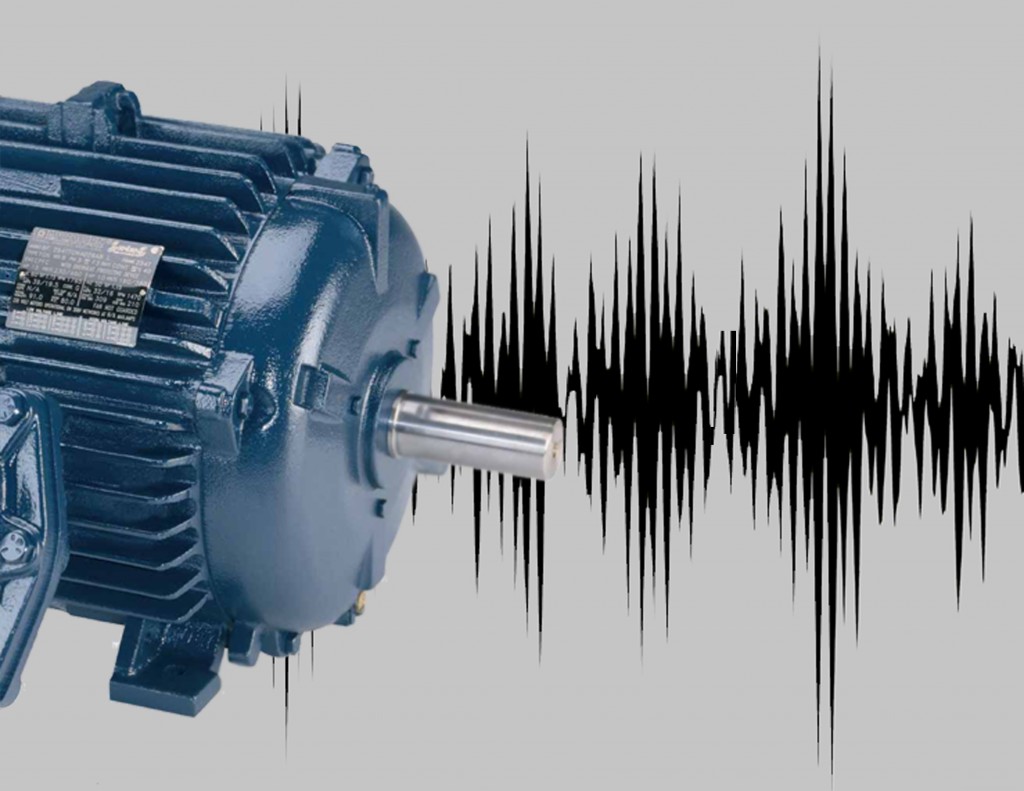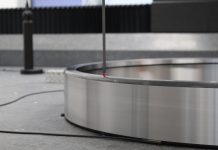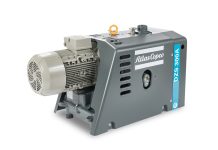Plant and maintenance engineers often seem to have an intuitive nose for trouble, so are able to predict pending problems with machinery and take pre-emptive action to prevent them. It is not the result of magical powers, rather of long experience with plant and machinery. Bill Bertram of motor maker Marathon Electric explains how different motor sounds can be interpreted.
If you walk around a piece of plant that is running, you will hear it making a noise. If you listen carefully you will be able to pick out individual elements within the overall sound. For instance, you may be able to hear a fan whirring, a pump thumping and a conveyor rumbling.
It is not surprising then that an experienced plant engineer will be able to pick out individual electric motors and come to know their specific ‘sound signatures’. If a motor’s sound starts to change, this may be an indication of a problem, so the astute plant engineer will take the time to investigate and may thus nip a potentially major breakdown in the bud.
There are two main classes of extraneous noise in motors – mechanical and electrical. The most likely mechanical causes of noise are worn bearings, moving parts rubbing together or colliding, a bent shaft, and a loose or missing screw or other minor part. The type of noise may well indicate the problem, and the relevant part of the motor can be inspected and repaired if necessary.
The most likely electrical causes of noise are the loss of one of the three phases leading to a phase imbalance (three-phase motors only), or harmonics caused by the use of an inverter. Again, the character of the noise may suggest the problem; the solution may be simple, but could also be a bit more complicated.
Motor sound signature analysis is in fact a highly developed field of study, but it is generally only viable to apply in very special situations, such as the main drive motor on a nuclear submarine and the enormous pumping motors used in deep shaft mines. In major industrial applications, such as power stations, the similar discipline of vibration analysis is sometimes used as a way of monitoring the ‘health’ of large motors. But in most cases motor noise is assessed intuitively by engineers familiar with the plant on a day-to-day basis.
Cause and effect
Common causes of damage to a motor include physical impact, electrical or mechanical overload and poor maintenance. Probably the most common of all is a blow that damages the relatively fragile fan cover and causes it to impact the fan. While damage to the cover will be immediately apparent, a fan blade may also be broken or bent or the fan’s mounting or shaft may suffer. A simple visual inspection will show all of these problems apart from a slight bend in the shaft, which will probably lead to a whirring or humming noise in operation.
A larger impact could bend the main shaft, damage the bearings, dislodge a minor part or even damage the casing. Most of these could involve a major repair or even require the scrapping of the motor.
The motor’s central drive shaft can also be bent if it is subject to excessive load: perhaps a crane trying to lift an overly heavy object or a conveyor motor continuing to run even though there is a physical blockage on the conveyor. It is worth noting that drive shafts often experience their load as being asymmetric, i.e. they are subject to a constant bending moment.
A slightly misaligned or bent motor shaft will produce a humming sound. A similar noise can be created if there is a minor fault in the transmission equipment attached to the motor shaft. The latter can be confirmed by disconnecting the motor shaft from the load and turning it on. If the noise disappears, the fault is not in the motor.
If the noise is still present, there is a second test to do. Turn the motor on, then off; if the motor stops turning instantly, the problem is almost definitely electrical, not mechanical. A burning smell or carbon deposits indicate a failed connection, which may be easily repaired. It is possible that one of the coils of the rotor has failed (become unwound or disconnected), causing the electromagnetic field to become asymmetric and creating rotor wobble. If one of the coils feels loosely packed, a rewind is probably required.
Rewinds will nearly always need to be undertaken by a professional, as will replacement of damaged shafts and worn bearings. Many other repairs could be completed in-house, although it may make more sense economically to simply replace the motor.
It is increasingly common to use a motor in conjunction with an inverter or variable-speed drive. A drive can be used to reduce energy consumption by running the motor at a slower speed (energy savings are often very considerable), or to provide an extra level of operational control (for instance a motor driving a centrifuge could be set up to have three set speeds, two rates of acceleration and two rates of deceleration).
However, it should be noted that an inverter may increase both the electrical and mechanical stresses in a motor, so increased maintenance and monitoring could be required.
Conclusion
Industrial electric motors are robust and reliable pieces of equipment, which require remarkably little maintenance during their working lives. There are many, many examples of a motor giving sterling service for literally decades, especially if they are regularly inspected and minor problems are addressed promptly.
Maintenance generally consists of cleaning, lubricating, checking the mountings and load alignments, checking the running temperature (and ensuring free air circulation), listening/feeling for vibrations and checking electrical connections.
Common minor repairs may include tightening screws and bolts, redoing electrical connections and fitting a new cooling fan and/or cowl. Larger repairs include replacing worn bearings and rewinding coils, which may be better done by a specialist contractor.
One of the best ways to check on a motor is to get to know its sound signature and to listen to it regularly. It is not only a simple thing to do, but it becomes almost intuitive to a dedicated plant engineer, and it is probably the best early warning system available!
About Regal
Regal is a leading manufacturer of electrical and mechanical motion control products, serving an expansive array of markets from heavy industry to high technology. Regal’s manufacturing and service facilities are located worldwide. For more information: www.rotor.co.uk





Really this is looking nice and very powerful.
we have motor vibration at 17 hz, 33hz only
My Riccar Vacuum runs well and I don’t notice any problems. It is about 5 years old and recently began to whine upon cutting the power. It didn’t seem to do this previously. It is a gradually deceleration and a gradual decline in the whirling sound, otherwise everything seems ok. Should I be concerned?
My TEFC, 3ph., 50 HP Squirrel cage induction motor is coupled to a air compressor. When the load is about 20 % there is intermittent metallic knocking from the fan side, current in all the three phases is equal. But this noise greatly reduces when load is increased to more than 50 % . Motor is not getting excessively heated and it appears to be normal except for this problem.
Request your comments/guidance in the matter.
N..Ramesh
Dear Mr. Ramesh,
we are glad you appreciated the content of our magazine Power Transmission World.
For any request about electric motor noise, you can directly contact Rotor to the following address:
info@rotor.co.uk
Best regards
i have a 3 horse, 3phase motor that goes to full speed instantly and so quick that it gives a big loud BANG like a gun shot. how to remedy?, jim goplin
I have 20 hp siemens company motor and it stopped with a whistle like sound while it working. So what can i do to check the motor may it ok or burn….
Dear Mr. Lakhwinder singh,
I am glad you appreciated the content of our magazine Power Transmission World.
For any further information about ROTOR electric motors, you could directly contact the company:
ROTOR (UK) LIMITED
Unit 8, 16 Everitt Close
Denington Industrial Estate
Wellingborough NN8 2QF
UNITED KINGDOM
Tel +44 (0)1933-230900
info@rotor.co.uk
Best regards
I have an electric scooter lift in my Van. It has 2 motors.One to lift and the other to move in and out. While lifting my scooter the “IN ” motor made noise like a machine gun. ????
I half pushed it into the Van because it was struggling. Any thoughts /
Our Ref:AQ-37
Date:
Dear Sir/Madam
Our company Sky General Co would like to cooperate with your decent company. So if you are able to provide thesebelow items please send us your kind offer.
Item Description QTY
REPLACEMENT FOR SQUIRRELCAGE INDUCTION MOTOR
3PH/50HZ
DUTY CYCLE :S1/INS.CL: F/TEMP RISE: 80°C /P.F:0.9
BEARINGS GREASE LUB.WITH GREASE NIPPLE
AMB.TEMP:-18°–48°/ALT:1070M
1 TAGE NO : PM-311/6000 V/F S: 425M IMB3/250HP/RPM1490 1
2 TAG NO: EM-620/400 V/F.S IM V6 200 L/30 KW /RPM 1488 1
3 TAG NO : PM-620/400 V/D.S : 315 SMB-V1/90 KW /RPM 2970 1
We really appreciate you if you send us your technical data sheet, delivery time, delivery place and also the guarantee.
We will be grateful if you reply us sooner.
With best regards,
SKY GENERAL TRADING
Dear Natasha Nahas,
we are a Publishing House dealing in the mechanical and power transmission field.
We are not producer or distributor of parts and components.
Kind regards
Anna Bonanomi
editor
We manufacture Air Compressors. We are looking for a device that can recognize whether the machine is performing properly or no based on the noise it produces. In the sense, Anomaly detection in sound to detect a faulty equipment. And we are trying to quantify the sound produced by the machine.
Do you have any suggestions for this?
Dera Mr. Anup Patil,
for any request about electric motor vibration, you could directly contact Rotor to the following website: http://www.rotor.co.uk
Kind regards
Anna Bonanomi
editor
my 75Hp motor vibrates so much on no load, please I need an idea to its causes and solution
Dera Sir,
for any request about electric motor vibrations, you could directly contacxt the company Rotor to the following webiste:
https://www.rotor.nl
Kind regards
Anna Bonanomi
editor
Dear Mr. Anup Patil,
for any request about electrci motor vibrations, you could directly contact the company Rotor to the following webiste:
https://www.rotor.nl
Kind regards
Anna Bonanomi
editor
Thank you for these helpful tips to help me see what exactly is wrong with my electric motor. I didn’t know that I can actually turn my motor on and then off to check whether the problem is electrical or mechanical. I’ve noticed some noises from my motor and I can see that one of the coils are loose. I think that I should probably bring it to a professional to see if it needs rewinding or other repair services.
Thanks a lot to you for sharing about this electric motor’s need here, these kinds of ideas are were much needed. I really appreciate that you have provided the data too, really appreciative and useful blog for us. Looking for more!! Come across Bencableelectrical.co.nz and hope you can visit this too to get more information.
This is such a nice blog to know weather your electric motor trying to tell you something. This article provides us true and insightful information regarding it. This article is very helpful. I am sure many people will come to read about it in future. You have done an excellent job with this content I must say.One must check this Mitchellelectrical.nz it gives us more info on this topic.
I love this blog, and great that you have shared these about is your electric motor trying to tell you something.I enjoy reading this blog; hope to learn more from your blog in future. Great points!! I love this blog; please keep updated us with such information.
Dear All, we are glad you appreciated the content of our blog and for your suggestioins. Regards
Anna Bonanomi
(editor)
Hey thanks for posting this useful content on your electric motor trying to tell you something presented here, I really hope it will be helpful to many. I hope you keep update us with such great tips and information in future too. This is a great post; I will share as much as I can. Appreciative content!!I must say this, if you get time can visit Insightelectrical.co.nz for ideas on this topic.
Dear All, we are glad you appreciated the content of our blog. Regards
Anna Bonanomi
(editor)